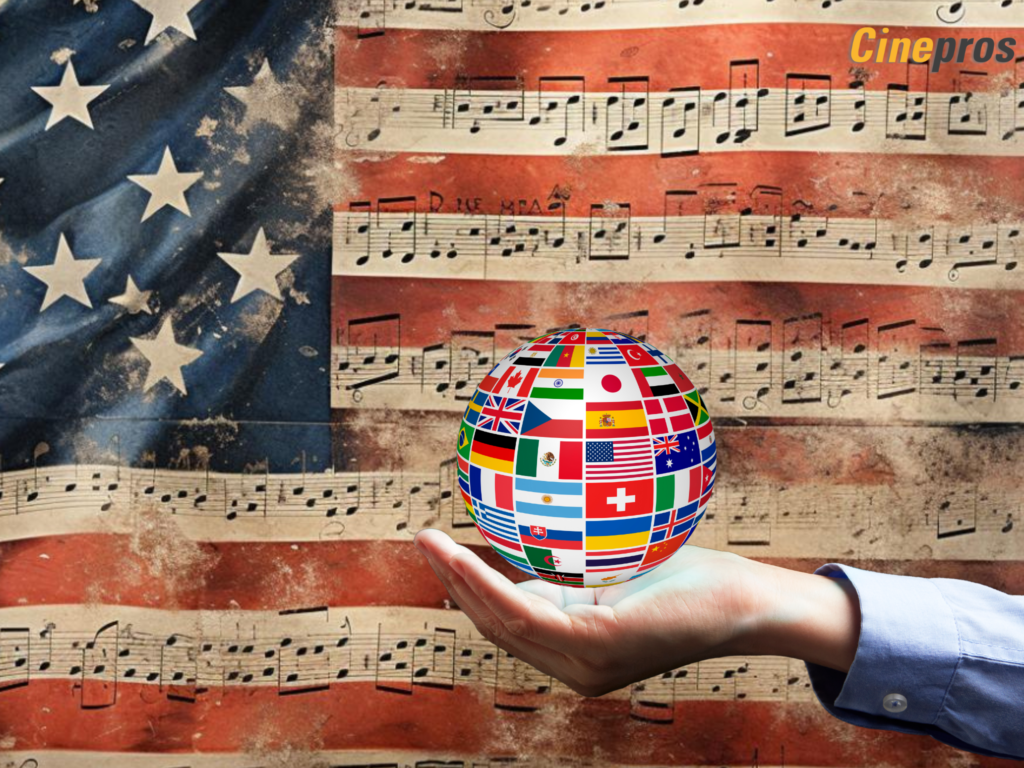Today, on the 4th of July, as Americans commemorate Independence Day, “The Star-Spangled Banner” resonates not only in English but also in translations across the globe. Originally penned in 1814 by Francis Scott Key, this anthem is a poignant symbol of American resilience and patriotism. Its translations into various languages offer unique insights into linguistic
One of the most recognized translations of “The Star-Spangled Banner” is in Spanish, titled “La Bandera Estrellada.” Officially commissioned by the U.S. State Department in 1919, this translation was authored by Clotilde Arias, a Peruvian immigrant. Arias crafted the translation to preserve the original meaning and poetic structure while making it accessible and resonant for Spanish-speaking audiences. The translation mirrors the anthem’s English lyrics closely, maintaining its reverence and spirit.
Official Translations in Other Languages
Beyond Spanish, “The Star-Spangled Banner” has been translated into several other languages to reach diverse communities and enhance international understanding. Some notable examples include:
- French (“La Bannière étoilée”): France, a historical ally of the United States, has its own rendition of the anthem. The French translation seeks to capture the anthem’s essence while adapting to the linguistic and cultural nuances of the French language.
- German (“Das Sternenbanner”): In Germany, “The Star-Spangled Banner” is known as “Das Sternenbanner.” This translation reflects Germany’s diplomatic relations and cultural exchanges with the United States over centuries.
- Chinese (“星条旗”): Mandarin Chinese translation, “Xīngtiáoqí,” allows Chinese-speaking populations to connect with the anthem’s themes of freedom and resilience in their native language.
- Japanese (“星条旗よ永遠なれ”): The Japanese translation, “Seijōki yo Eiennare,” underscores the anthem’s universal themes in the context of Japan’s historical ties with the United States.
Each of these translations strives to preserve the anthem’s original meaning and symbolism while adapting to the linguistic and cultural norms of its respective audience. The challenge lies in maintaining the poetic flow and emotional impact of the anthem, which is inherently tied to its English composition.
Fun Fact:
Did you know? “The Star-Spangled Banner” was originally set to the tune of a British drinking song called “To Anacreon in Heaven.” The melody was repurposed to accompany Francis Scott Key’s patriotic lyrics, leading to its iconic status as the U.S. national anthem.

Linguistic and Cultural Adaptations
Translating “The Star-Spangled Banner” goes beyond mere linguistic conversion; it involves careful consideration of historical contexts, cultural sensitivities, and poetic expressions. For instance, translators often navigate archaic English phrases and cultural references that may not directly translate into other languages. Furthermore, the anthem’s structure and meter pose challenges in maintaining rhyme schemes and lyrical beauty across languages.
In some cases, translations may necessitate adjustments to ensure phonetic harmony with the music, as seen in the Spanish translation’s adaptation to fit the anthem’s original melody and rhythm. Such adaptations highlight the dynamic interplay between language, music, and cultural symbolism in the translation process.
As we celebrate Independence Day and reflect on the anthem’s legacy, these translations serve as bridges that unite cultures and honor the enduring values it embodies. They remind us that music and language transcend borders, fostering understanding and appreciation across the globe.
At Cinepros, we understand the importance of accurate and culturally sensitive translations. Whether you have upcoming projects for translation services or simply wish to learn more about linguistic adaptations, we’re here to help. Contact us today to explore how we can assist you in bridging language barriers and reaching diverse audiences effectively!



